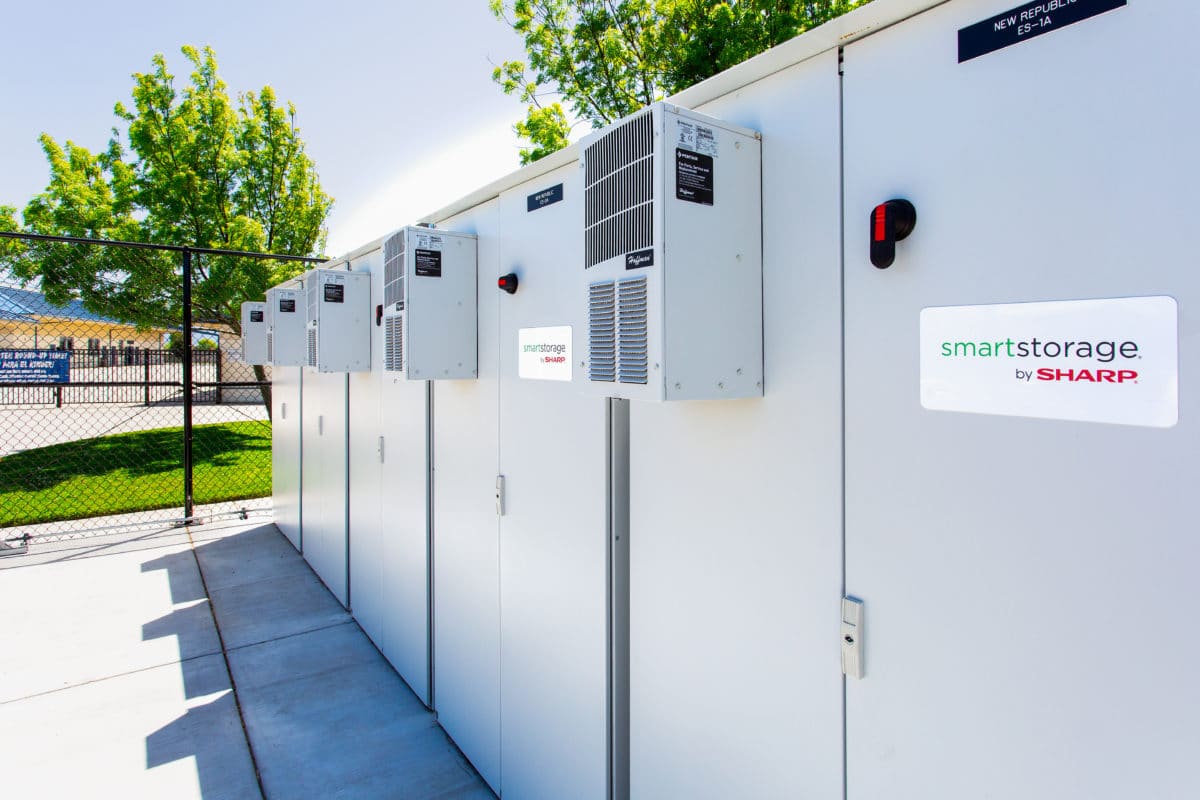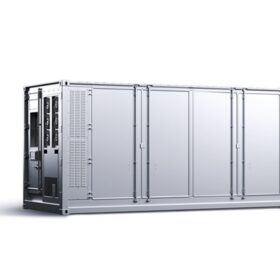By: Amish Shah, Madeleine Tan, Kyle Hayes and Alyssa Walker
The U.S. energy storage market is primed to grow at a rapid pace. A study by IHS Markit forecasts that the U.S. grid-tied energy storage market will nearly double in 2019 – from 367 MW in 2018 to 712 MW this year – which does not include behind-the-meter energy storage that would add several hundred MW of deployed energy storage to the forecast for 2019. This significant expansion is poised to occur against a backdrop of regulatory changes in federal and state incentive programs, cost improvements and advances in monetization of energy storage. These current and anticipated trends affecting the U.S. energy storage market will have a significant influence on how industry participants choose when, where and how to invest in and develop energy storage technology.
Currently, one of the most notable concerns with respect to continued investment in energy storage is the timing of development and construction. Federal law currently offers an up to 30% business Investment Tax Credit under IRC Section 48 (ITC) based on the qualified tax basis of a qualified energy storage system that is paired with a solar energy generation resource (or certain other renewable resources). However, in order for an owner of a solar-plus-energy storage project to claim the full 30% ITC, the project must commence construction (as defined under IRS rules) in 2019. After 2019, the amount of the ITC will incrementally step down to 26% in 2020, 22% in 2021 and 10% in 2022. Because the ITC has played a critical role in the development of the renewables market, and consequently, the energy storage market by making investments in such technologies highly attractive to the finance and investment community, there are concerns that a step-down of the ITC would stunt the projected growth of such markets in the United States. Indeed, some industry participants are advocating for a further extension of the ITC or at least a slower step-down, and although ITC extension legislation has been introduced, the prospect of such an extension is currently uncertain.
Under the federal ITC, as noted above, stand-alone energy storage systems are not currently eligible for the ITC. Instead, such systems must be paired with a solar or other renewable generation resources in order to be entitled to federal tax benefits. To that end, legislation to extend the federal ITC to stand-alone storage systems was recently introduced by Congress, and although prospects of its ultimate passage remain unclear, renewable energy interest groups have put forth formidable lobbying efforts to support the legislation. The impact of an extension of the federal ITC to stand-alone storage systems would be particularly significant for developers, eliminating the need to contemporaneously develop and construct a companion energy resource, thus mitigating additional operation and construction risk.
With the step-down of the ITC, the availability of state-level incentives are anticipated to play a more critical role in the growth of the U.S. energy storage market. It will also play a more critical role where developers choose to construct energy storage systems because developers will be searching for the states that offer incentives attractive enough to counter the impact of the step-down of the ITC. Fortunately, more states in the US are developing and adopting energy storage incentives in various forms, including direct financial incentives.
The following seven states have adopted direct financial incentives for owners of energy storage systems: Arizona, California, Florida, Maryland, Nevada, New York and Wisconsin. Some of these financial incentives are in the form of tax credits or exemptions. For instance, Maryland offers the Energy Storage Tax Credit, based on the costs of energy storage installation and New York offers a property tax exemption, known as the Energy Conservation Improvements Property Tax Exemption, which includes energy storage projects for residential customers. In addition to tax incentives, rebates and/or Time-of-Use (TOU) rate plans are also offered as a financial incentive for owners of energy storage systems in Arizona, California, Florida and Nevada and pending in Hawaii. Wisconsin offers a unique grant program funding energy storage projects, the Energy Innovation Grant Program, which is budgeted at $5 million for 2019 for certain local and state governmental entities or manufacturers in the solar or energy storage industry.
In addition to energy storage-specific financial incentives, there are five states that have adopted energy storage-specific procurement targets for its utilities – California (1,825 MW by 2020), Massachusetts (200 MW by 2020), New Jersey (2,000 MW by 2030), New York (3,000 MW by 2030 with an interim goal of 1,500 MW by 2025) and Oregon (five MW by 2020). In addition, adoption of energy storage targets and other similar policies are pending, or in process, in several other states, including Arizona, Colorado, Illinois, Indiana, Minnesota, Missouri, New Mexico, Nevada, Ohio and Vermont. New Jersey’s most recent adoption of a target of 2,000 MW of energy storage by 2030 is on track to be one of the most aggressive energy storage targets adopted in the US. While some energy storage targets, like that of California, are mandatory, others are not. Nevertheless, these state-level incentives help to increase deployment of energy storage systems at a more rapid rate than the market would otherwise experience.
Additionally, the costs associated with battery storage deployment is decreasing dramatically due to rapidly lowering costs of lithium-ion batteries. As of the spring of 2019, levelized costs of such battery systems dropped to roughly $187/MWh, a reduction of nearly 85 percent since 2010. Thus, battery storage systems paired with a renewable energy resource are becoming increasingly scalable and competitive with, for example, natural gas-fired generation resources.
Interest in energy storage systems from financiers is evolving due to profitability associated with multiple revenue streams (known as “revenue stacking”) for services that such systems are able to provide to three distinct stakeholder groups. First, storage systems can provide customer-related services, such as backup power and peak shaving. Second, storage systems are capable of providing ancillary (wholesale market) services to an independent system operator (known as an “ISO”) such as voltage support and frequency regulation. Third, utility-related services, such as congestion relief and resource adequacy. In practice, however, the majority of cash flows to storage systems to date have come by way of providing ISO services, although bilateral payment structures with direct customers are evolving. In any event, it is important to note that each ISO values energy storage differently due to varying demand and resource needs and thus ISOs maintain individualized market rules with respect to energy or capacity-related payments for such systems such as thresholds for continuous energy delivery. As a result, an understanding of the respective nuances of such market rules is imperative.
While challenges remain regarding energy storage implementation, continuously declining costs, evolving revenue streams, market participants’ willingness to undertake long-term energy offtake and capacity agreements and consistent regulatory and legislative momentum to renew or supplement federal and state incentives have made battery storage systems increasingly financeable. Moreover, the deepening recognition of the value of energy storage systems for purposes of sustainability (particularly for corporate off-takers), capacity flexibility, grid support/resiliency and carbon-reduction initiatives — such as New York’s recently passed climate change law, which calls for three GW of energy storage systems by 2030 — indicates that the energy storage market is poised to continue its rapid pace of growth with both regulatory and financial support.
This content is protected by copyright and may not be reused. If you want to cooperate with us and would like to reuse some of our content, please contact: editors@pv-magazine.com.








The push for utility scale energy storage will hopefully bleed over to the behind the meter storage systems for individual homes and businesses. Being able to use one’s generation asset for their own advantage is a better overall system to own. Utilities are fighting mightily in courts across the land to change the way excess solar PV generation is credited. Net metering is the typical PPA between the residential or business solar PV system and the utility. What the utility wants is net billing where the PPA credits the excess power produced at the wholesale electricity rate. Now the wholesale rate is partially determined by the utility itself. So, for the individual that adopts solar PV should also incorporate smart energy storage. For the near term, self consumption will give the solar PV adopter the most bang for the buck.